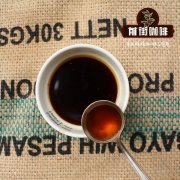[introduction to single Coffee] what is single coffee? Flavor characteristics of individual coffee beans in Daquan

Professional coffee knowledge exchange more coffee bean information please follow the coffee workshop (Wechat official account cafe_style)
Individual coffee beans
What is a single coffee growth belt?
The grading of coffee
3
What is a single coffee?
Individual coffee beans: coffee marked as specific coffee produced in a specific country, producing area, or manor.
-Ethiopia-Yega Schiffe (EthiopiaYirgacheffe)
-Sumatra-Ikanda Manning (Sumatra Iskandar)-Guatemala-Antigua (GuatemalaAntigua)
By tasting individual coffee beans, you can understand the characteristics and flavor of coffee in a certain country or region.
4
Coffee growth zone
Cultivation conditions of coffee trees:
-the average annual rainfall is 1500 Murray 2000 mm.-and the average temperature is about 20 degrees.
-areas where there will be no frost.
Coffee growth zone (CoffeeZone or CoffeeBelt)
-distributed in the circular zone of the Tropic of Cancer
-the temperature and annual rainfall are about the same, and there is plenty of sunshine and fertile soil
Main producing areas:
-Central and South America, Africa, Asia, southern Arabian Peninsula and Oceania
5
South America: less bitter, less sour, neutral taste Central America: fruity in the fragrance
Rich aroma, bitter taste, more
Do not have a rich and full taste
Full-bodied and wild flavor
6
The grading of coffee
Classification method
Market name
Coffee tree name
The method of handling coffee beans
Latitude
Defect level
Size, shape and color
Tree age
Bean age
Description
It is usually named after the export port or by the origin of the coffee farm.
Arabica has always been synonymous with good coffee.
Washing method and drying method
The higher the latitude, the better the quality of the coffee.
Whether it is particle size or flat or not, as long as it is "hard beans" is the first choice of coffee, particularly mellow, with acidic taste
New or old strain
Most beans taste better after 5 to 10 years, but they are still grown with coffee beans.
For example, scorched black, broken beans and immature beans, mixed with some branches,
Stones and impurities.
seven
Caribbean and Central American countries: altitude
-Costa Rica: Mark altitude
-Costa Rica, Nicaragua: name of origin.
-Nicaragua: quality classification and altitude
-the elevation of Guatemala is blurred, from 700m to 1700 m.
Colombia in South America: appearance size, defect rate
-"Supremo" means the largest particle. It is worth noting that the apparent size of coffee beans has nothing to do with their flavor. The higher the altitude, the better the flavor.
eight
Kenya: appearance + number (quality cup series)
-"AA+" is the highest grade of Kenyan coffee, with only special flavor.
Batches with excellent and few defects are allowed to be marked.
-"AA" is the largest particle, "AB" particle is smaller,
"PB" is round beans. Male bean
Mother bean
nine
ten
Chapter II treatment methods of Coffee beans
Coffee bean processing process
Coffee bean refinement
Roast coffee beans
one
Coffee bean processing process
two
three
four
five
Coffee bean refinement
Dry type: non-washing type, natural type or sun washing type
Semi-washed type
six
1. Dry process/Natural method:
Freshly picked coffee fruit exposure (often turned) crackles to remove the sun-dried peel, pulp and silver peel.
seven
Features: soft acidity, uniform bitterness, fermented flavor and consistency
Disadvantages: beans are not very beautiful, easy to adulterate immature and defective beans
Brazil, Yemen, Ethiopia
eight
two。 Washing type (Wet process/Washed method)
Removal of immature fruits and impurities (running water) removal of pulp and pericarp fermentation one day-two days water drying endocarp removal
Coffee beans are glossy in color and less impurity in Mexico and Colombia.
nine
ten
Washed coffee VS. Natural coffee
Flavor
Place of Origin
Washed coffee
The acidity is strong and the quality is uniform.
But the consistency of the bubble is a little lower.
Colombia, Kenya, Costa Rica, Guatemala, Mexico and Hawaii
Natural coffee
With soft acidity and uniform bitterness, it has a better flavor and consistency than washed beans, but beans often have defects and are not very beautiful.
Brazil, Ethiopia, Yemen, Ethiopia
eleven
3. Semi-washed (Semi washed)
Method)
Similar to washing type
Removal of pulp and peel drying soaking endocarp flavor: between drying and washing
Mantenin, Indonesia
Important Notice :
前街咖啡 FrontStreet Coffee has moved to new addredd:
FrontStreet Coffee Address: 315,Donghua East Road,GuangZhou
Tel:020 38364473
- Prev

What are the common types of coffee beans in coffee shops? What are individual coffee beans?
Professional coffee knowledge exchange more coffee bean information please follow the coffee workshop (Wechat official account cafe_style) the front street coffee baked a large number of coffee beans, common there are beans named after the producing country or region, such as Ethiopia, Manning, etc., as well as beautiful names of special beans, for novices who taste coffee for the first time, may be full of items to do
- Next

Introduction to the taste and variety of individual coffee beans explain the suitable brewing method of single coffee
Professional coffee knowledge exchange more coffee bean information please follow the coffee workshop (Wechat official account cafe_style) my favorite drink a chain of coffee shop Mocha! It is true that the coffee shop chain has accompanied you and me through many difficult working hours, but this is a bit of a lack of taste and personality. People who really know coffee will never be satisfied with a cup of instant drink. Learn to taste.
Related
- Detailed explanation of Jadeite planting Land in Panamanian Jadeite Manor introduction to the grading system of Jadeite competitive bidding, Red bid, Green bid and Rose Summer
- Story of Coffee planting in Brenka region of Costa Rica Stonehenge Manor anaerobic heavy honey treatment of flavor mouth
- What's on the barrel of Blue Mountain Coffee beans?
- Can American coffee also pull flowers? How to use hot American style to pull out a good-looking pattern?
- Can you make a cold extract with coffee beans? What is the right proportion for cold-extracted coffee formula?
- Indonesian PWN Gold Mandrine Coffee Origin Features Flavor How to Chong? Mandolin coffee is American.
- A brief introduction to the flavor characteristics of Brazilian yellow bourbon coffee beans
- What is the effect of different water quality on the flavor of cold-extracted coffee? What kind of water is best for brewing coffee?
- Why do you think of Rose Summer whenever you mention Panamanian coffee?
- Introduction to the characteristics of authentic blue mountain coffee bean producing areas? What is the CIB Coffee Authority in Jamaica?

